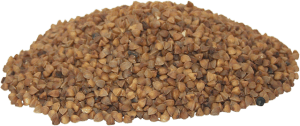Buckwheat combined with satiety increases satiety.
Nearly every dieter is looking for that magic gun that will reduce their dietary intake and promote weight loss. Researchers have long pointed to a diet rich in whole grains as a potential panacea toward weight loss and maintenance. Whole grains have been linked to multiple beneficial health outcomes, including cardiovascular health, weight loss, and a decreased risk of acquiring type 2 diabetes. While wheat is considered a dominant grain crop in Canada and the United States, other minor crops, including gluten-free buckwheat, become popular alternatives to wheat products such as couscous. Many of the other grains are considered to be healthier alternatives to wheat because of the higher fiber and lower gluten content. You can quickly figure out why Buckwheat might be superior to wheat for weight control.
So what is buckwheat? Buckwheat is not related to wheat and it not even a grain. Buckwheat is actually a seed or “pseudo-grain.” It is cooked similarly to a grain so we will not split hairs. We will consider it a grain for nutritional purposes. Both buckwheat groats and couscous are traditionally consumed in the form of the porridge or side dish however their acute effects on satiety and food intake remain unknown because it has not been widely studied.
The good news is that a 2017 study attempted to answer this question by looking into the short-term effects of couscous and buckwheat on satiety and short-term food intake in young adult males[1]. The study was a small study of 19 subjects in which the researchers randomized 19 healthy, 18–30 y male participants and assigned to groups to consume three different treatments on three separate occasions one week apart. The groups included a water control, cooked unground whole grain buckwheat groats, and cooked medium grain couscous. The two non-control groups ate the same number for calories with identical fiber content. At three separate mornings, participants arrived at the laboratory after an overnight fast and consumed one of the treatments, and subjective appetite was measured.
The researchers found that the treatments with couscous and buckwheat led to increased cumulative energy intake by 21% and 31% compared to water control, respectively. Overall, there was no difference in cumulative energy intake between the treatments with buckwheat and couscous. Both the treatments with buckwheat and couscous significantly reduced subjective appetite over two hours when compared to water control although there was no difference between the treatments with buckwheat and couscous.
The bottom line: The intake of cooked couscous and buckwheat led to the suppression of subjective appetite for two hours post consumption. There was no difference in caloric intake, and the buckwheat and couscous resulted in a similar effect. More research is needed.








Be the first to comment on "Research: Buckwheat may promote satiety"